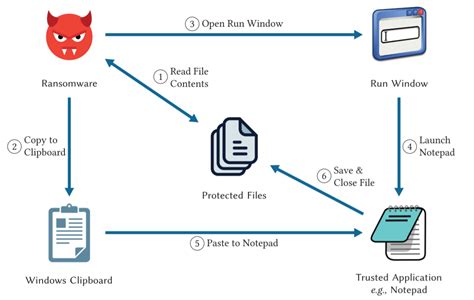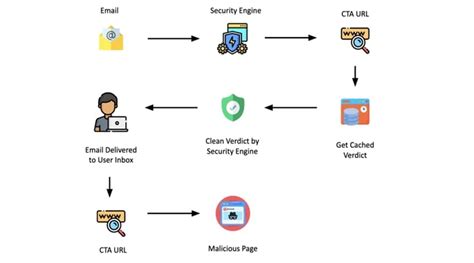In today’s digital age, the importance of protecting your computer from malicious threats cannot be overstated. Antivirus software has become an essential tool for safeguarding sensitive information, preventing harmful viruses, and maintaining system performance. One of the most dangerous cyber threats today is ransomware, a form of malware that locks users out of their files or systems until a ransom is paid. This article explores how antivirus software plays a crucial role in ransomware protection, offering solutions that detect, prevent, and mitigate such attacks. By understanding how ransomware works and choosing the right antivirus software, you can protect your devices from this evolving threat.
Embark on a detailed exploration of this topic with zokablog.com
1. Introduction to Antivirus Software
Antivirus software is a program designed to detect, prevent, and remove malicious software from computers and other digital devices. Initially, antivirus solutions were developed to combat viruses, which are self-replicating programs that can damage systems or steal information. However, as the nature of cyber threats has evolved, so have antivirus programs, now addressing a wider range of malware such as trojans, worms, spyware, and ransomware.
These programs work by scanning files, monitoring system activity, and checking for patterns or behaviors that resemble known threats. Once detected, the antivirus software either removes or quarantines the malware to prevent further harm. Many modern antivirus solutions are equipped with real-time protection, meaning they continuously run in the background to safeguard devices without interrupting daily activities.
Beyond just eliminating threats, antivirus software provides additional features like firewalls, phishing protection, and secure browsing tools to enhance overall cybersecurity. With cybercrime on the rise, having an updated antivirus program is essential for both individuals and businesses. Whether you’re using a free version or a paid premium plan, antivirus software is the first line of defense against digital threats, ensuring that your computer remains protected from known and emerging malware risks.

2. What is Ransomware and How it Works
Ransomware is a type of malicious software designed to block access to a computer system or encrypt files until a ransom is paid, typically in cryptocurrency. It has become one of the most prevalent and damaging cyber threats, targeting individuals, businesses, and even government agencies. Once the ransomware infiltrates a system, it either locks the user out or encrypts critical files, making them inaccessible.
Ransomware commonly spreads through phishing emails, malicious attachments, or infected websites. Unsuspecting users may click on a seemingly legitimate link or download a file that contains the ransomware. Once executed, the malware rapidly encrypts files or locks the system, followed by a demand for payment. Victims are often given a short timeframe to pay the ransom before the files are permanently deleted or access is lost.
What makes ransomware particularly dangerous is its ability to evolve, bypassing traditional security measures. New variants constantly emerge, some of which target backups or spread laterally within networks, affecting multiple devices. While paying the ransom may seem like the quickest solution, it doesn’t guarantee data recovery and can encourage future attacks. Prevention is critical, making it essential for users to adopt strong ransomware protection strategies, including regular backups and robust antivirus software.

3. Importance of Antivirus Software in Ransomware Protection
Antivirus software plays a critical role in protecting against ransomware attacks by acting as a first line of defense for detecting and neutralizing malicious threats before they can cause harm. Modern antivirus programs are equipped with advanced detection algorithms that scan for suspicious activity, flagging and blocking ransomware before it can encrypt files or lock users out of their systems. This proactive protection is essential in preventing ransomware from infiltrating a device.
One of the key features of antivirus software in ransomware protection is real-time scanning. It continuously monitors incoming files, downloads, and system behavior for any signs of malware. When ransomware is detected, the software either quarantines or removes the threat, stopping the attack in its tracks.
Moreover, antivirus software regularly updates its threat database, ensuring it can recognize the latest ransomware variants. This is particularly important given how rapidly ransomware evolves to evade detection. With new strains constantly emerging, having updated protection is crucial.
In addition to blocking ransomware, many antivirus programs offer features like vulnerability assessments, email filtering, and firewall integration, all of which contribute to a more comprehensive security solution. By using reliable antivirus software, users can significantly reduce the risk of ransomware attacks and safeguard their sensitive data.

4. Types of Antivirus Software Available
There are various types of antivirus software available, each offering different levels of protection and features to meet users’ specific needs. These can be broadly categorized into free, paid, and enterprise-level solutions, depending on the scope of protection required.
Free antivirus software often provides basic protection against common malware threats, such as viruses, spyware, and limited ransomware protection. While they are a cost-effective option for individuals with minimal needs, they typically lack advanced features like real-time scanning, robust ransomware detection, and full system vulnerability assessments. Examples of free antivirus programs include Avast, AVG, and Microsoft Defender.
Paid antivirus solutions, on the other hand, offer comprehensive protection, combining features like advanced ransomware detection, real-time monitoring, secure browsing, and email filtering. These programs often include additional tools like VPNs, firewalls, password managers, and identity theft protection. Popular paid antivirus software includes Norton, McAfee, and Bitdefender, all of which are tailored for home users, offering multi-device support and premium security features.
For larger businesses or organizations, enterprise-level antivirus software is available. These solutions are designed to protect entire networks and can manage security across hundreds of devices. They include features like centralized management, threat analytics, and intrusion detection systems. Examples of enterprise antivirus solutions include Symantec Endpoint Security and Kaspersky Endpoint Security.
5. Best Practices for Ransomware Protection
Protecting against ransomware requires a combination of strong cybersecurity habits and reliable software solutions. One of the most important practices is regularly updating your antivirus software and operating systems. These updates often include patches for known vulnerabilities that ransomware could exploit.
Additionally, regularly backing up important data is crucial. By storing backups on external devices or cloud services, users can restore their files without having to pay a ransom in the event of an attack. Ensuring backups are disconnected from the main system after use prevents ransomware from infecting them.
Another key practice is to avoid clicking on suspicious links or downloading unknown attachments, especially in unsolicited emails. Phishing emails are a common method for distributing ransomware, so users should always verify the source of any communication.
Finally, using strong, unique passwords for different accounts, along with enabling multi-factor authentication (MFA), adds an extra layer of security. Combining these practices with a robust antivirus program significantly reduces the risk of ransomware attacks, helping safeguard both personal and professional data.
6. Case Studies of Successful Ransomware Protection
Several organizations and individuals have successfully protected themselves against ransomware attacks by employing a combination of strong antivirus software and proactive cybersecurity practices. One notable case involved a small business in the healthcare sector. Recognizing the sensitive nature of its data, the company invested in a premium antivirus solution with advanced ransomware detection capabilities. When a phishing email containing ransomware was accidentally opened by an employee, the antivirus software detected the threat immediately, quarantining the malware before it could encrypt any files. Additionally, the company’s regular backup strategy allowed them to restore unaffected data quickly, minimizing downtime.
In another case, a large enterprise in the financial industry faced a sophisticated ransomware attack that attempted to infiltrate its network. The company used an enterprise-level antivirus program with real-time monitoring and a multi-layered firewall system. When the ransomware was detected, the software not only isolated the threat but also provided detailed threat analysis, enabling the IT team to close the vulnerability and prevent further attacks.
These case studies highlight the importance of using updated antivirus software, implementing strong backup protocols, and maintaining vigilant cybersecurity practices. They demonstrate that with the right tools and strategies in place, businesses can effectively thwart ransomware attacks and protect their critical data.
7. Conclusion and Recommendations
In conclusion, ransomware remains a formidable threat in today’s digital landscape, making effective cybersecurity measures more critical than ever. Antivirus software serves as an essential line of defense, offering protection against various types of malware, including ransomware. By understanding how ransomware works and its potential impact, users can take proactive steps to safeguard their systems.
To enhance protection, it is crucial to choose a reliable antivirus solution that includes advanced features such as real-time monitoring, regular updates, and robust ransomware detection capabilities. Additionally, users should adopt best practices like regularly backing up data, avoiding suspicious emails and links, and using strong, unique passwords.
For organizations, investing in enterprise-level antivirus software and conducting regular cybersecurity training for employees can significantly reduce the risk of ransomware attacks. Staying informed about the latest cybersecurity trends and threats will empower individuals and businesses to respond effectively.
By implementing these recommendations, users can create a more secure computing environment, mitigating the risks associated with ransomware and ensuring the safety of their sensitive data. Prioritizing cybersecurity is not just an option; it’s a necessity in today’s technology-driven world.
zokablog.com